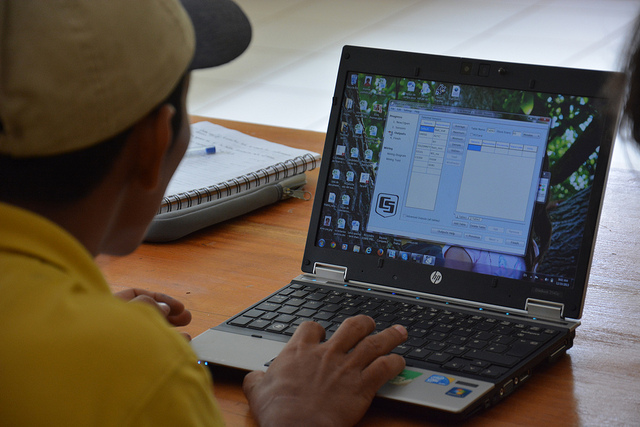What is the challenge?
Climate change poses significant challenges to agriculture and food security, but our understanding of these challenges, their impacts, and options to address them is limited by the data and modeling tools available. This activity contributes to systematic intercomparisons across leading global modeling efforts, linking climate, crop and economic models, as a basis for improvement in the models and ultimately in our understanding of impacts and possible responses.

The project is using data from the Intergovernmental Panel of Climate Change (IPCC) fifth Assessment Report (AR5).
Key research questions
- How will climate change affect agricultural productivity under a baseline scenario?
- How could impacts differ under alternative scenarios for the adoption of promising new technologies?
- How do these results vary across models, and what can we learn from those differences?
Basic information about the activity
The Agricultural model Intercomparisons and Improvement (AgMIP) project is a distributed climate-scenario simulation exercise for historical model intercomparisons and future climate change conditions with participation of multiple crop and agricultural economics modeling groups around the world. The goals of AgMIP are to improve substantially the characterization of risk of hunger and world food security due to climate change and to enhance adaptation capacity in both developing and developed countries.
AgMIP will significantly enhance information (including uncertainty estimates) to guide policymakers regarding risk of hunger, world food security, and agricultural adaptation. A key aspect is to create capacity-building partnerships among agricultural crop and economic modelers around the world, enhancing the ability of each country to evaluate current and future climate impacts and adaptation options.
As part of the above program, the International Food Policy Research Institute (IFPRI) is participating in the Global Economics team. Under this activity, it aims to establish a methodological and procedural foundation for the systematic comparison and improvement of global and regional land use, production and trade models used for analysis of climate change impact, as well as mitigation and adaptation in the agricultural sector. It will involve coordinating and facilitating intercomparison of both regional and global agricultural market models being used for climate change impact and adaptation research. Achieving these objectives will include participating in the AgMIP cross-cutting themes to build collaborations between climate scientists, crop modelers and economic modeling groups to improve methods and procedures that allow crop model simulations to be used as inputs into economic models.
Collaborators
- National Institute for Environmental Studies, Japan (NIES)
- Food and Agriculture Organization of the United Nations/World Bank (FAO/World Bank)
- Massachusetts Institute of Technology, USA (MIT)
- U.S. Department of Agriculture – Economic Research Service (USDA- ERS)
- Australian Bureau of Agricultural and Resource Economics and Sciences (ABARES)
- Agricultural Economics Research Institute, Wageningen University and Research Centre (LEI-WUR)
- Pacific Northwest National Laboratory (PNNL)
- International Institute for Applied Systems Analysis (IIASA)
- International Food Policy Research Institute (IFPRI)
- Potsdam Institute for Climate Impact Research (PIK)
- Institute of Development Studies (IDS)
- The Organisation for Economic Co-operation and Development (OECD)
Outputs
- Gerald Nelson and Gerald Shively, 2013. Modeling climate change and agriculture: an introduction to the special issue. Agricultural Economics.
onlinelibrary.wiley.com/doi/10.1111/agec.12093/abstract - Martin von Lampe et al. 2013. Why do global long-term scenarios for agriculture differ? An overview of the AgMIP Global Economic Model Intercomparison, Agricultural Economics.
onlinelibrary.wiley.com/doi/10.1111/agec.12086/abstract - Gerald Nelson et al, 2013. Agriculture and climate change in global scenarios: why don't the models agree. Agricultural Economics.
onlinelibrary.wiley.com/doi/10.1111/agec.12091/abstract - Hermann Lotze-Campen et al, 2013. Impacts of increased bioenergy demand on global food markets: an AgMIP economic model intercomparison. Agricultural Economics.
onlinelibrary.wiley.com/doi/10.1111/agec.12092/abstract - Christoph Schmitz, 2013. Land-use change trajectories up to 2050: insights from a global agro-economic model comparison. Agricultural Economics.
onlinelibrary.wiley.com/doi/10.1111/agec.12090/abstract - Hugo, Valin et al. 2013. The future of food demand: understanding differences in global economic models. Agricultural Economics.
onlinelibrary.wiley.com/doi/10.1111/agec.12089/full - Christoph Müller and Richard D. Robertson, 2013. Projecting future crop productivity for global economic modeling. Agricultural Economics.
onlinelibrary.wiley.com/doi/10.1111/agec.12088/abstract - Sherman Robinson, 2013. Comparing supply-side specifications in models of global agriculture and the food system. Agricultural Economics.
onlinelibrary.wiley.com/doi/10.1111/agec.12087/abstract
Other links
- Global Futures and Strategic Foresight Project
- Agricultural Model Intercomparisons and Improvement Project
Contact
Keith Wiebe (k.wiebe@cgiar.org)
This project is led by International Food Policy Research Institute (IFPRI) and funded by the United States Agency for International Development (USAID), under the program management of Columbia University, Earth Institute.
Related activities to the project are funded by:
- Bill & Melinda Gates Foundation
- CGIAR Research Program on Policies, Institutions, and Markets (PIM)
- CGIAR Research Program on Climate Change, Agriculture and Food Security (CCAFS)

Leave a Reply